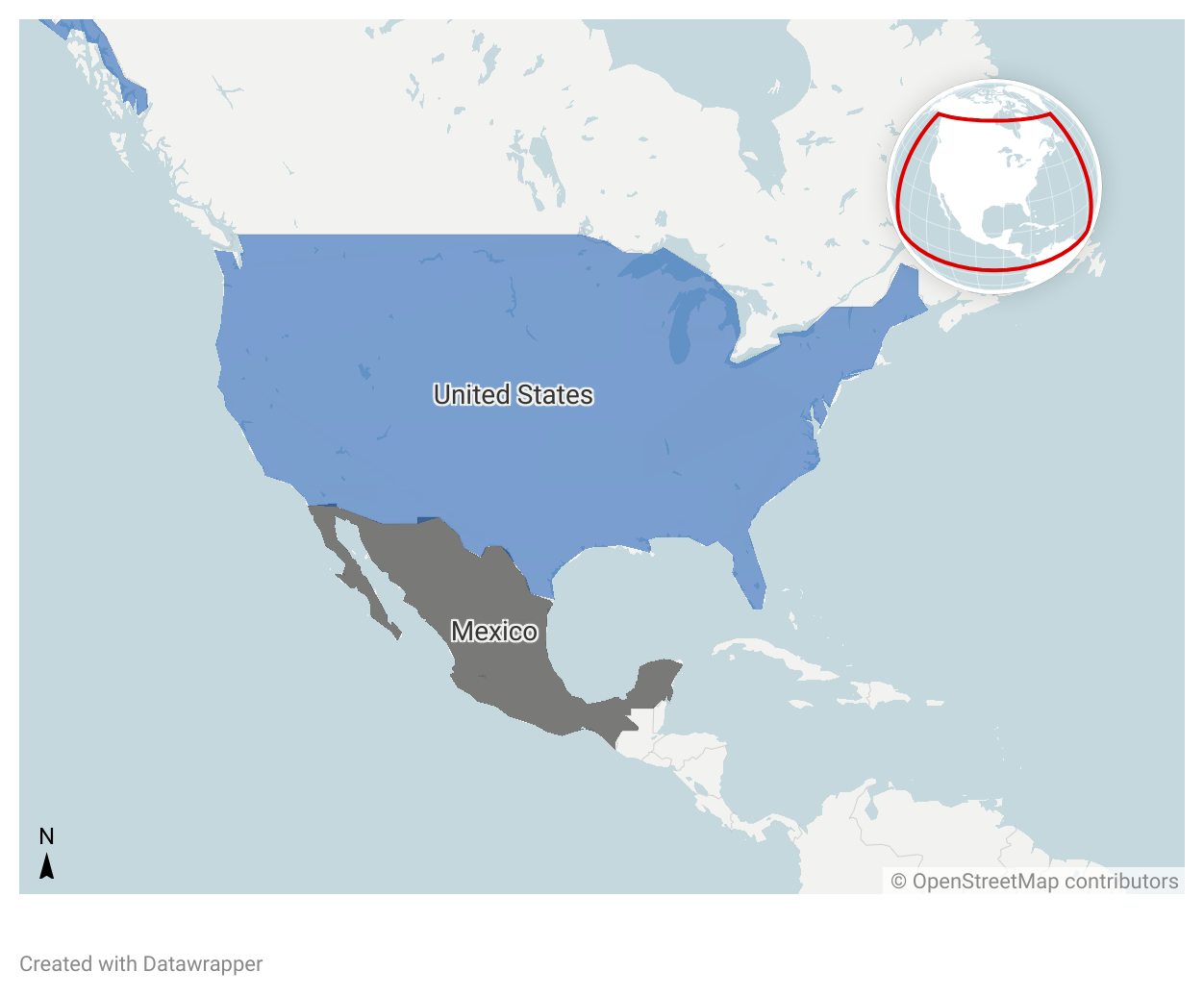Is Mexico China's Backdoor to the US?
By David Yang | 18 August 2025
Summary
Mexico’s surging trade deficit with China and foreign direct investment (FDI) from the country have drawn accusations from the US that it is a “backdoor” for Chinese automobiles to avoid US tariffs.
Reducing China’s access to Mexico will likely emerge as a key negotiating point as Mexico seeks to avoid US President Donald Trump’s newly threatened 30% tariffs.
The Mexican and US governments are aligned on protecting domestic North American industry from Chinese overcapacity, and will likely find common ground in coordinating protectionist policy against China.
Mexico’s trade relations with China will likely come under greater scrutiny as Mexican President Claudia Sheinbaum and President Trump negotiate a trade deal during the 90 day reprieve Trump granted to Mexico on 1 August, having initially threatened 30% tariffs. Since Trump’s first term, Mexico has been accused of being a “backdoor” for Chinese goods to bypass US tariffs, routing through Mexico into the free trade zone under the United States-Mexico-Canada Agreement (USMCA). Mexico’s trade deficit with China and Chinese automotive sector foreign direct investment (FDI) into Mexico surged to all-time highs, prompting US and Canadian officials to publicly question Mexico’s role in the USMCA.
Concerns have grown over Chinese firms increasingly setting up factories to complete automobile manufacturing while still importing key components from China. Between 2020 and 2024, the number of Chinese tenants at Mexican industrial parks doubled, attracted by Mexico’s tariff-free access to the US market until Trump’s second term. As Chinese exports to the US fall due to high tariffs, Mexico overtook China as the largest exporter to the US in 2023, sending USD 505.9b worth of goods in 2024.
However, this alone does not represent a mass evasion of US tariffs by Chinese car companies. Chinese firms in Mexico primarily produce intermediate goods, such as vehicle components, which then account for only a small portion of the “value-added” of goods traded across the US-Mexico border. In 2023 Mexican-manufactured exports to the US were 51% Mexican value-added and 7% Chinese. As manufactured goods often cross borders multiple times before exporting for final consumption, their US value-added content was actually 17%, rising to 20% for automotive exports. The Dallas branch of the Federal Reserve reports little evidence of Chinese firms set up in Mexico re-exporting finished goods directly imported from China. Nonetheless, Trump’s tariffs and threats have successfully deterred Chinese carmakers from building new factories in Mexico, with BYD cancelling a planned factory that would have produced 150,000 vehicles per year, more than triple the 40,000 they sold in Mexico in 2024.
Mexican officials have emphasised that multinational corporations in Mexico may be contributing to the rise in Chinese imports, as they often purchase inputs from the cheapest sources. The American Chamber of Commerce of Mexico reports that of Mexico’s USD 220b of manufactured goods exports to the US in 2023, 80% originated from US firms operating within the country. In producing automobiles and other manufactured goods, these firms struggle to find alternatives due to China’s dominance in intermediate inputs.
Mexico’s trade with China will only shift into greater focus as USMCA renegotiations begin in 2026. President Trump’s tariff exemptions on USMCA-compliant trade indicate that he is unlikely to completely scrap the agreement; North American supply chains are too closely interwoven and disrupting them would increase inflation and undermine economic growth. However, Mexico's greater vulnerability to a trade war and large trade deficit with China are points of leverage the US will likely use to extract concessions.
Mexico shares an interest with the US in stemming the flood of Chinese imports crowding out its domestic industry. Mexico’s surging trade deficit with China, reaching nearly USD 120b in 2024, is primarily driven not by industrial inputs but by consumer goods for the domestic Mexican market. The International Monetary Fund found that between 2017 and 2023, imports of final goods rose by 6%, while imports of intermediate goods declined by the same amount. In the first four months of 2025, Mexico overtook Russia to be the biggest importer of Chinese automobiles, while 65% of General Motors’ (Mexico’s second-largest car seller by market share) sales in Mexico are imported from China. Pressured by Trump, Sheinbaum has already unveiled plans to protect Mexican industry from Chinese imports, including tariffs on textiles and crackdowns on illegally imported Chinese goods. The USMCA renegotiations are thus likely to converge on common ground of raising USMCA-wide tariffs on Chinese-manufactured goods and restrictions on Chinese FDI.
Forecast
Short-term (Now - 3 months)
Mexico is highly likely to offer more far-reaching protectionist measures against China to secure a trade deal before Trump’s 90-day reprieve on current tariffs ends. Tariffs on additional Chinese consumer goods imports and tighter FDI access are likely policy options, as well as increased regulatory hurdles for existing Chinese firms operating in Mexico.
Medium-term (3-12 months)
Mexican businesses will almost certainly struggle to shift away from Chinese inputs due to a lack of cheap alternatives. Any trade deal with the US is unlikely to offer full tariff relief, and Mexico’s economy will likely stagnate throughout 2025.
Long-term (>1 year)
Mexico’s government will likely impose greater tariffs on Chinese consumer goods imports and tighten foreign investment.
The 2026 renegotiation of the USMCA will highly likely converge on US, Mexican, and Canadian trade objectives on China, possibly leading to joint external tariffs on manufactured goods and automotive imports.




